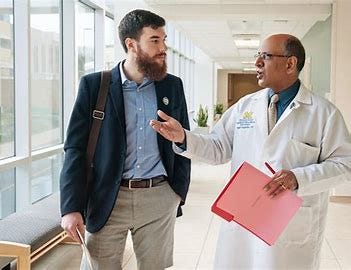EFOG EBCOG Part 2 OSCE: Handle the Clinical Exam’s Components

A type of performance-based assessment called an Objective Structured Clinical Examination is used to gauge a candidate’s clinical competency. Taking a patient’s history, technical proficiency, communication, teamwork, integrating knowledge into clinical problem solving, and assessing a research article’s clinical relevance are among the clinical competencies that will be assessed in the EFOG EBCOG.
In an OSCE, candidates go through a number of stations where they are required to interview, examine, treat, and/or monitor standardised patients and/or medical simulators, or they can be given a clinical problem to address. Throughout the process, they are reviewed and assessed.
Objective Of the Exam
The exact identical stations and marking methodology are used to evaluate each candidate. Candidates in an OSCE receive marks for each right step they complete on the mark scheme. As a result, the evaluation of clinical skills is now more objective than subjective.
Structured
An OSCE assigns a very particular responsibility to each station. When simulated patients are employed, comprehensive scripts are supplied to guarantee that all applicants receive the same information, including the appropriate emotions for the patient to express during the consultation. To guarantee that the candidate is assigned a highly particular task to do, instructions are meticulously crafted. The EFOG OSCE is thoughtfully designed to cover a wide range of abilities and portions of every curriculum element.
Clinical Examination
The OSCE is intended to evaluate how well theoretical and clinical knowledge is applied. The questions are standardised and the applicant is only given questions that are on the mark sheet when theoretical knowledge is needed, such as when responding to questions from the examiner at the conclusion of the stations. There won’t be any points awarded to the applicant if they answer any more questions.
The purpose of the EFOG EBCOG Part 2 OSCE exam is to assess clinical and practical skills. Examiners will be watching and rating the abilities that participants will be asked to exhibit, and some of these stations will contain medical simulators, patient actresses, and all three types of stations. Participants will rotate to the next station after ten minutes at each station. Examiner marking is done for OSCEs.
Ten stations will make up the EFOG Part 2 OSCE portion of the test: two for basic technical skills (1 Obs and 1 Gyn), two for complex technical skills (1 Obs and 1 Gyn), two for knowledge integration and decision-making (1 Obs and 1 Gyn), two for communication skills, and a rest station for reading a scientific article. The exam will be given in English, and candidates will have two minutes to read. Every year in November, the Part 2 exam is administered.
if you want to prepare EFOG EBCOG Course. Join StudyEFOG and that is the best option .I hope this information was useful to you. I hope you do well on the EFOG Part 2 OSCE exam!

Comments
Post a Comment